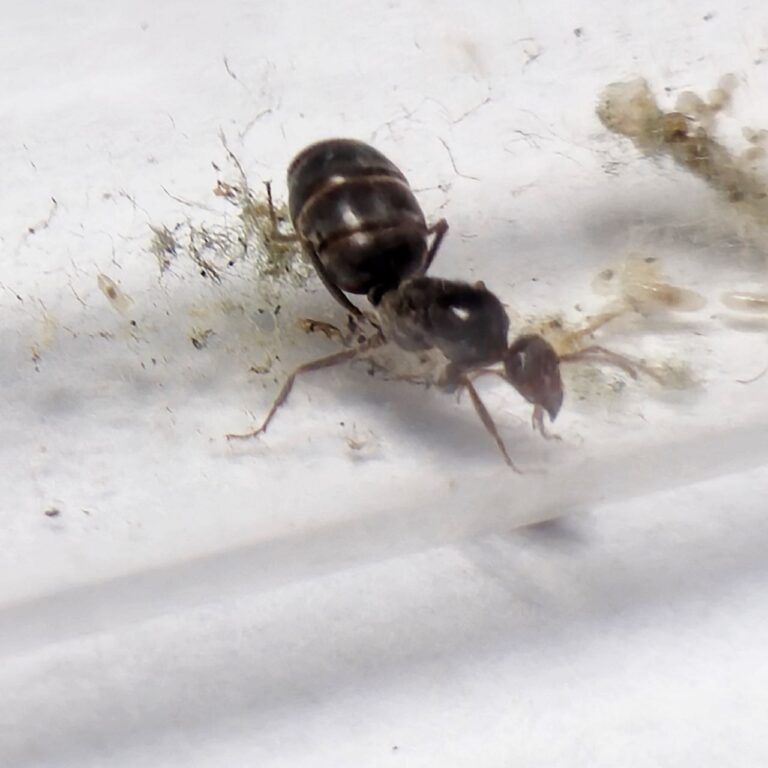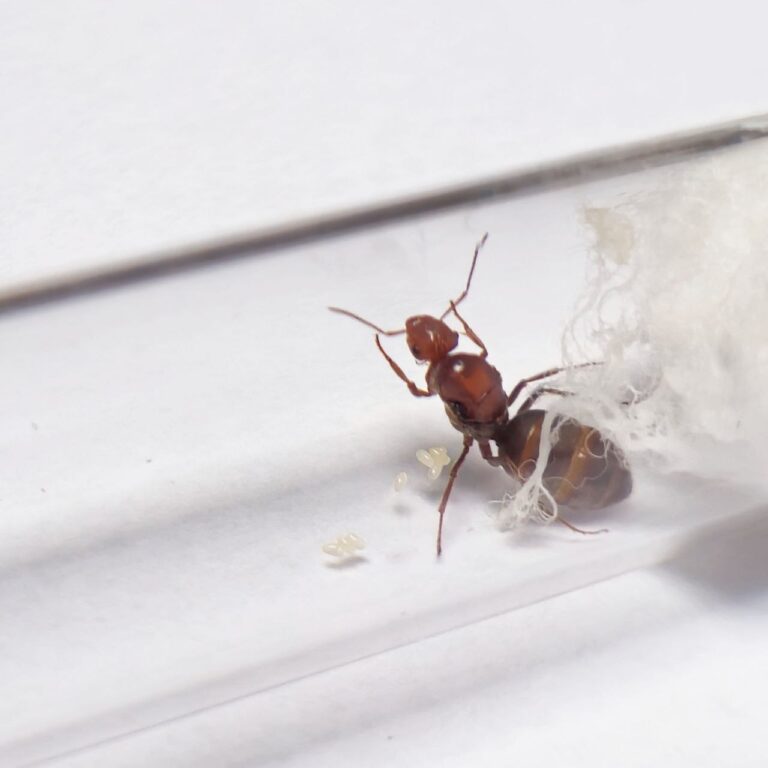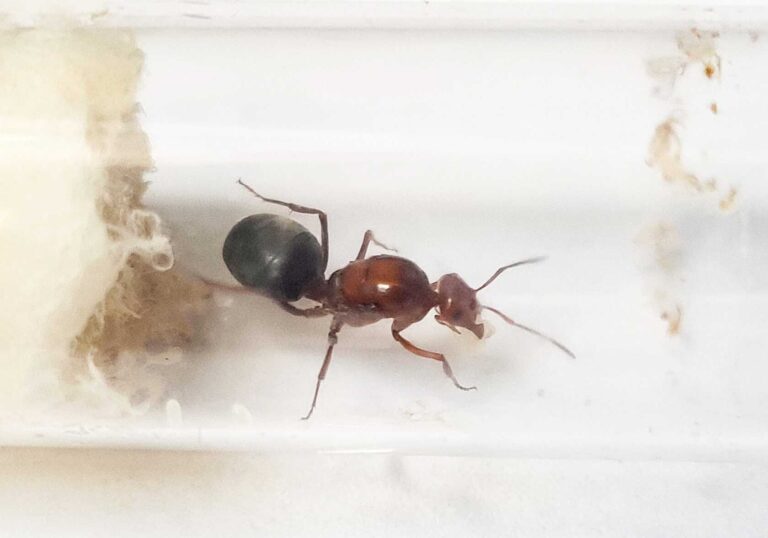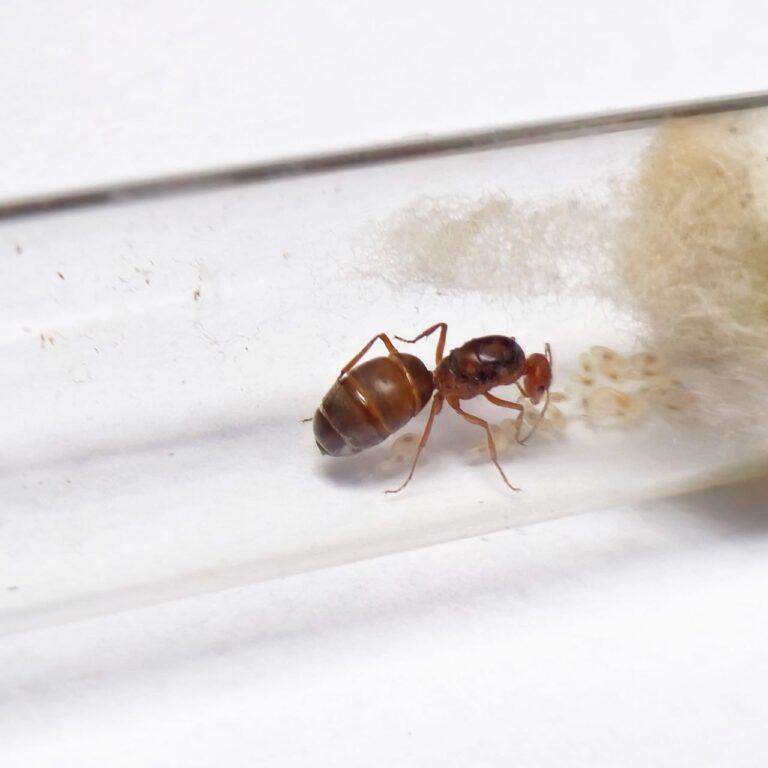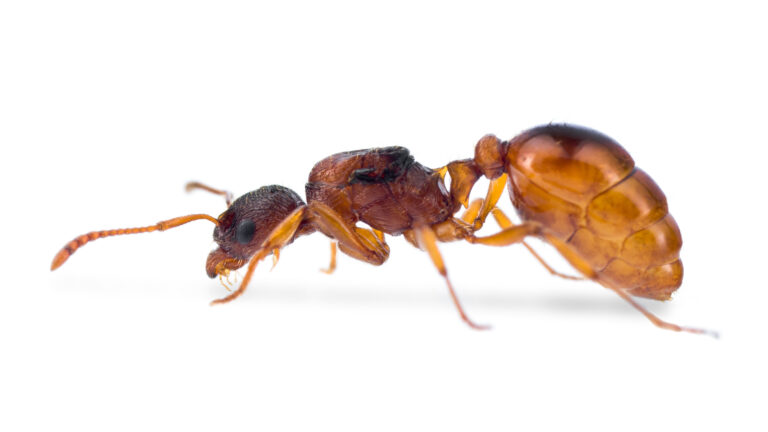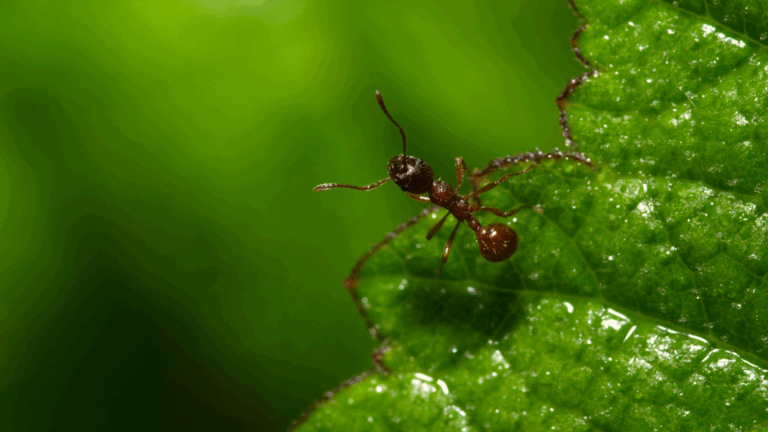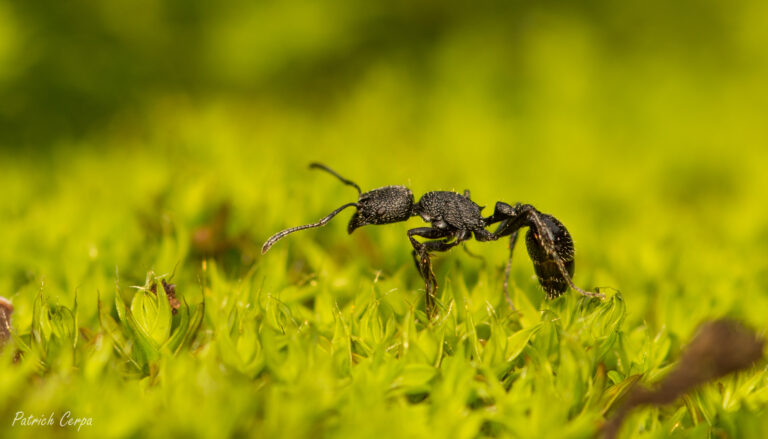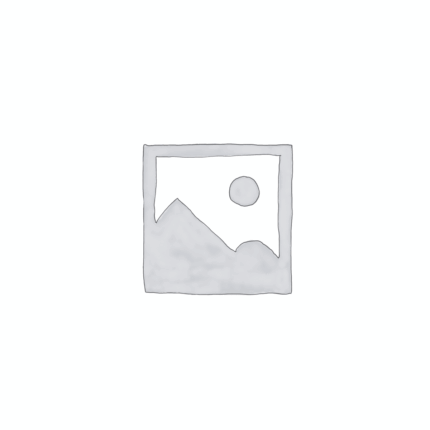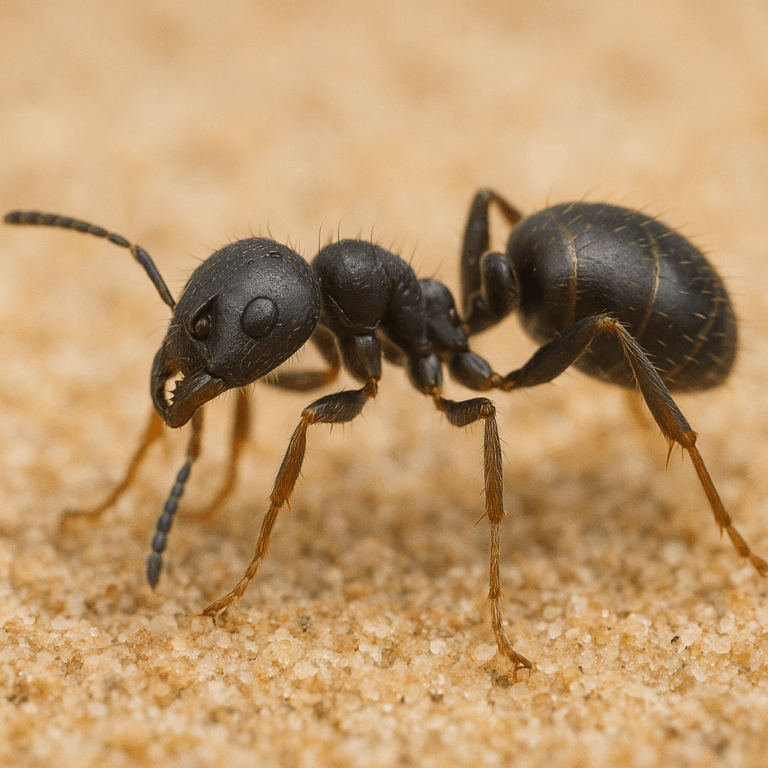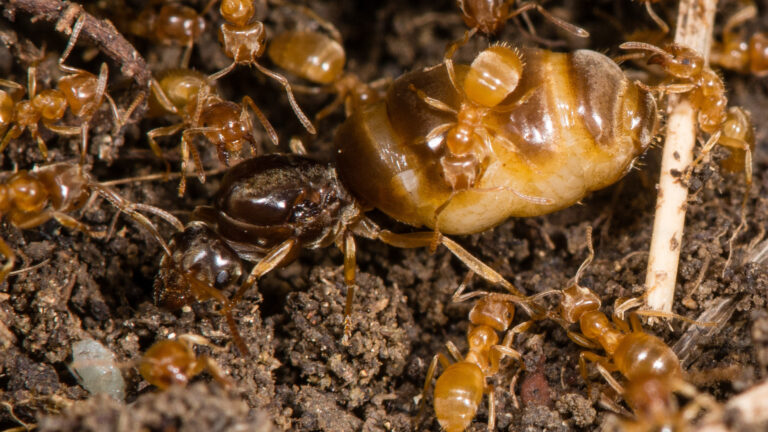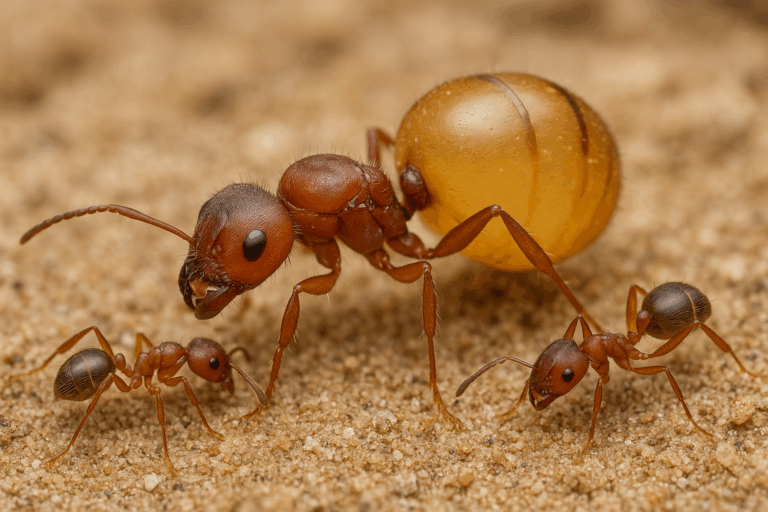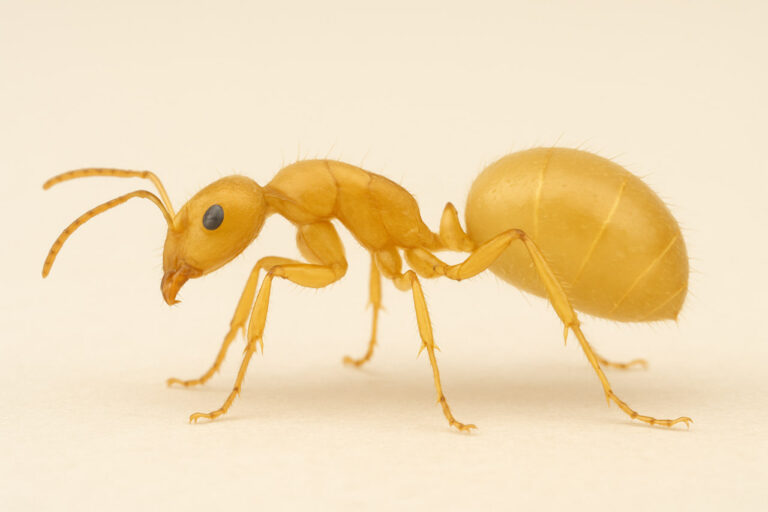Showing all 11 results
Product categories
Stock status
Filter by price
Behavior
Defficulty
Number of workers
Origin
Filter by size
Wintering
Myrmecocystus flaviceps
549,90 zł – 869,90 złMyrmecocystus flaviceps is a monogynous ant species with a medium development rate. The queen measures 11–12 mm, while the workers range from 4–8 mm. They typically display a reddish head and thorax with a darker gaster. This species is known for its honey pot workers (repletes), which store liquid food in their distended abdomens.
They feed on insects, syrups, fruits, vegetables, and protein-rich foods. Humidity should be maintained at 40–60% in the arena and 50–70% in the nest, while the temperature should remain between 23–30 °C in the arena and 22–26 °C in the nest.
Myrmecocystus kennedyi
549,90 zł – 869,90 złMyrmecocystus kennedyi is a monogynous ant species with colonies reaching up to 5,000–8,000 workers. They develop at a moderate pace. The queen measures approximately 12–14 mm in length, while workers range from 4.5 to 7 mm. Their body is typically light to reddish-brown, with a slightly darker gaster, and they have a somewhat glossy appearance. As with other species in the genus, repletes (specialized workers that store food) may be present in mature colonies. Their diet consists of insect prey, sweet substances like nectar or syrup, fruit, jelly, and protein-rich foods such as cooked egg or chicken.
Myrmecocystus mimicus
589,90 zł – 949,90 złMyrmecocystus mimicus is a polygynous colony of ants with a medium development rate. The queen is 10-12mm in size, while the workers are 4-8mm. They have a red head and black body. They feed on food insects, fruits, vegetables, and seeds. The humidity in their arena should be 50-70% and in their nest 70-90%. The temperature should be regulated accordingly.
Myrmecocystus wheeleri
549,90 zł – 869,90 złMyrmecocystus wheeleri is a monogynous ant species with colonies reaching up to 6,000–10,000 workers. They exhibit a moderate development speed. Queens measure approximately 12–14 mm in length, while workers range from 4.5 to 7 mm. Their coloration is generally light to reddish-brown, with a darker, often slightly translucent gaster. Like other species in the genus, they may develop repletes—workers specialized in storing liquid food. Their diet includes small insects, sugary liquids like nectar or syrup, fruits, jelly, and protein-rich foods such as cooked chicken or egg.ir diet includes small insects, sugary liquids like nectar or syrup, fruits, jelly, and protein-rich foods such as cooked chicken or egg.
Myrmica rubra
49,90 zł – 189,90 złMyrmica rubra is an aggressive, fast-moving species perfect for experienced antkeepers. Its high colony growth, polygyne structure, and active foraging behavior make it exciting to observe. Best suited for those prepared for regular maintenance and who enjoy a more challenging species with real fire-ant personality.
Patagonomyrmex angustus
589,90 zł – 999,90 złPatagonomyrmex angustus polygynous ant colony, with colony size usually under 400 workers, rarely exceeding that size in natural nests
Size: Queens: ~7-9 mm, Workers: ~4–6 mm
Temnothorax unifasciatus
59,90 zł – 99,90 złTemnothorax unifasciatus is a tiny, peaceful species forming small colonies in acorns or rock cracks. Best suited for natural-style micro formicaria and hobbyists who enjoy detailed ant behavior on a miniature scale.
Lasius alienus
39,90 złLasius alienus is a species of ant commonly found in Europe and parts of Asia. It typically nests in soil, often under stones or in grassy areas. These ants are small, dark brown to black, and are known for their cooperative colony behavior. Lasius alienus plays an important role in the ecosystem by aerating soil and preying on small insects.
Lasius flavus
39,90 zł – 119,90 złLasius flavus is a peaceful, slow-growing species best suited for patient keepers who enjoy subtle colony dynamics over flashy surface activity. Their unique subterranean behavior, gentle disposition, and aphid-farming instincts make them a fascinating contrast to surface-foraging species like L. niger or L. alienus. Ideal for naturalistic setups and long-term observation, L. flavus offers a deep look into the hidden world beneath our feet.
Myrmecocystus romainei
699,90 złMyrmecocystus romainei is a rare, monogynous ant species native to arid regions of the southwestern United States. It is notable for its honey pot workers (repletes) that store liquid food in their swollen gasters. The queen measures around 11–12 mm, and workers range from 4–8 mm. This species typically shows a reddish to tan coloration, with a darker gaster. Like other Myrmecocystus, it thrives in warm, dry environments and has a medium development rate.
Myrmecocystus testaceus
549,90 zł – 869,90 złMyrmecocystus testaceus is a monogynous ant species with a medium development rate. Queens typically measure 11–12 mm, and workers range from 4–8 mm. This species is distinguished by its lighter, yellowish to orange-tan coloration (hence the name testaceus), often with a contrasting darker gaster. Like other Myrmecocystus species, it features honey pot workers (repletes) that store liquid food in their distended abdomens.


